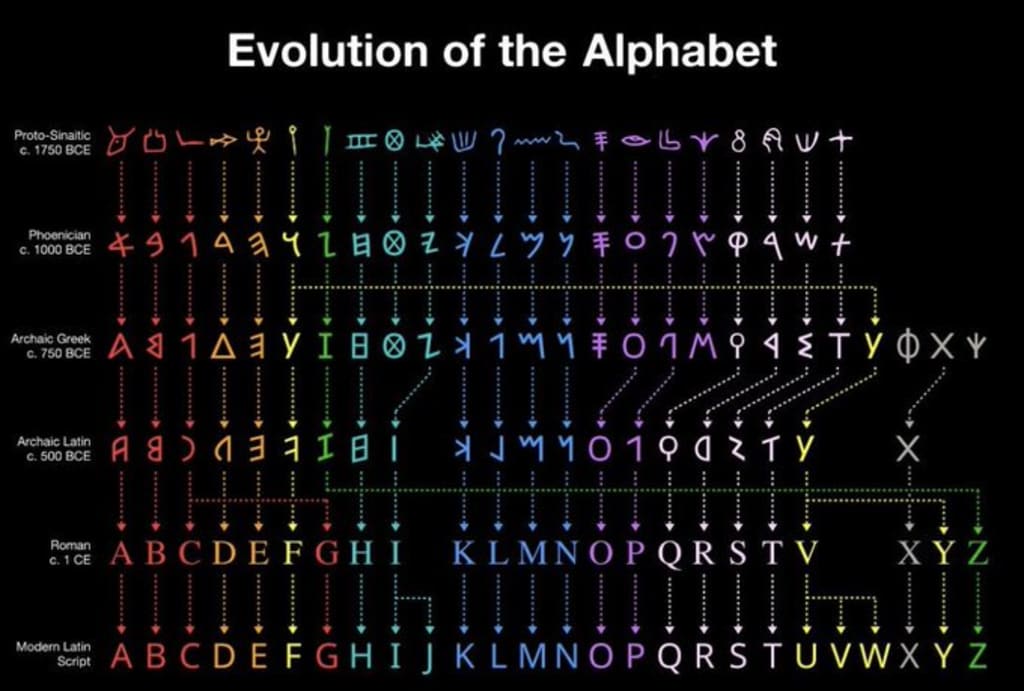A Comprehensive Exploration of the Evolution of the Alphabet
Tracing the Origins, Development, and Global Impact of Written Language

The alphabet, a fundamental tool of communication, has undergone a remarkable evolution over millennia, shaping civilizations, cultures, and languages around the globe. From its humble beginnings in ancient civilizations to its modern-day ubiquity, the alphabet has played a pivotal role in human history. In this comprehensive exploration, we delve into the origins, development, and global impact of the alphabet, tracing its fascinating journey from ancient symbols to the diverse array of scripts and writing systems seen today.
The origins of the alphabet can be traced back to ancient civilizations such as Mesopotamia, Egypt, and the Indus Valley, where early writing systems emerged to record information and communicate ideas. These early systems, known as proto-writing, utilized pictograms and ideograms to represent objects, concepts, and sounds. Over time, these symbols evolved into more abstract forms, laying the groundwork for the development of phonetic writing systems.
One of the most significant milestones in the evolution of the alphabet was the development of the Phoenician alphabet around 1050 BCE. The Phoenician alphabet consisted of 22 consonantal letters, representing sounds rather than objects or ideas. This revolutionary innovation provided a more efficient and flexible means of communication, paving the way for the spread of literacy and the emergence of written literature.
The Phoenician alphabet served as the foundation for numerous other writing systems, including the Greek, Latin, and Hebrew alphabets. As these civilizations flourished and interacted with one another, the alphabet underwent further modifications and adaptations to suit the needs of different languages and cultures. The Greek alphabet, for example, introduced vowels, enabling more precise representation of speech sounds and facilitating the recording of complex literary works.
The evolution of the alphabet was closely intertwined with advancements in writing materials and tools. Early writing systems were inscribed on clay tablets, papyrus scrolls, and other perishable surfaces, limiting their durability and accessibility. However, the invention of writing materials such as parchment, paper, and ink revolutionized the way information was recorded and disseminated, fueling the spread of literacy and education.
During the Middle Ages, the art of manuscript production flourished in monastic scriptoria across Europe. Monks meticulously transcribed and illuminated religious texts, preserving ancient knowledge and shaping the cultural landscape of medieval Europe. Illuminated manuscripts, adorned with intricate designs and vibrant colors, served as both religious artifacts and works of art, reflecting the spiritual and artistic aspirations of the era.
The invention of the printing press by Johannes Gutenberg in the 15th century marked a watershed moment in the history of the alphabet. Gutenberg's movable type technology revolutionized the process of book production, making books more affordable and accessible to a wider audience. This technological innovation facilitated the standardization of written language and accelerated the spread of literacy and knowledge throughout Europe and beyond.
The proliferation of written language facilitated by the printing press paved the way for unprecedented cultural exchange and globalization. Ideas, literature, and scientific discoveries were disseminated across continents, transcending linguistic and cultural barriers. The alphabet became a vehicle for cross-cultural communication and understanding, fostering connections between diverse peoples and societies.
Today, the alphabet encompasses a diverse array of scripts and writing systems, ranging from the Latin alphabet used for English and Romance languages to the Cyrillic alphabet used for Slavic languages. In addition to alphabetic scripts, other writing systems such as syllabaries, abjads, and logographic scripts continue to be used around the world, reflecting the linguistic diversity of humanity.
The evolution of the alphabet is a testament to the ingenuity, creativity, and adaptability of human civilization. From its humble beginnings in ancient symbols to its modern-day ubiquity, the alphabet has transformed the way we communicate, learn, and share knowledge. As we continue to embrace new technologies and innovations, the alphabet remains a timeless symbol of human expression and connection, transcending borders and uniting people across cultures and continents.
About the Creator
Enjoyed the story? Support the Creator.
Subscribe for free to receive all their stories in your feed. You could also pledge your support or give them a one-off tip, letting them know you appreciate their work.






Comments
There are no comments for this story
Be the first to respond and start the conversation.